Ranked: the most critically endangered animals on the planet
Under pressure
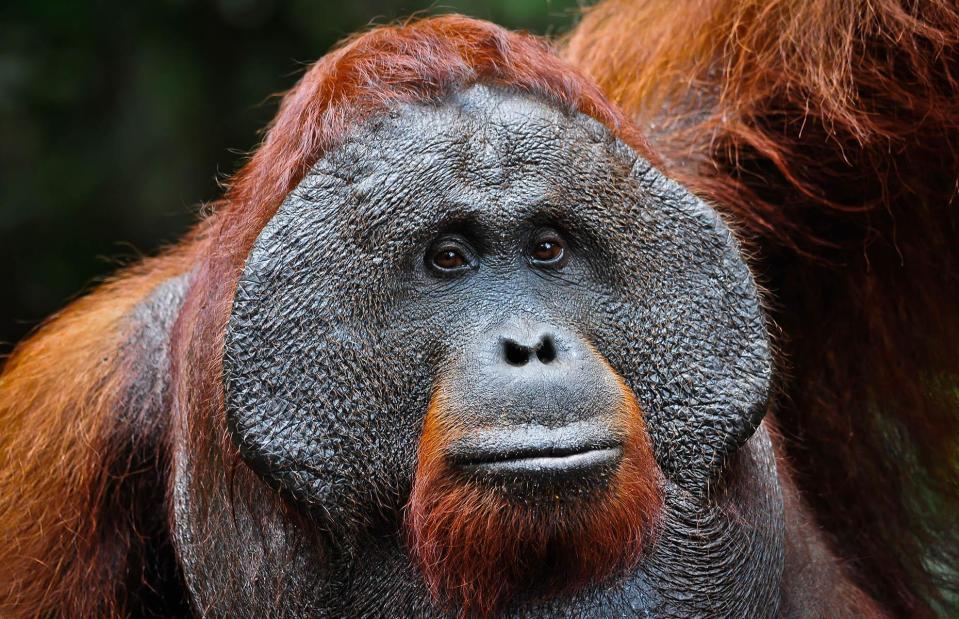
Russell Watkins/Alamy Stock Photo
Climate change and habitat loss are having a devastating impact on wildlife around the world, pushing some species, quite literally, to the brink. The International Union for Conservation of Nature (IUCN) has been compiling a Red List of Threatened Species since 1963 and we’ve combined that information with data from the World Wildlife Fund (WWF) to rank the world’s most endangered animals, focusing on those still living in the wild and not surviving solely in captivity.
Read on to see our countdown of the animals we believe are most in danger, culminating in the creature most under threat…
30: Giant panda
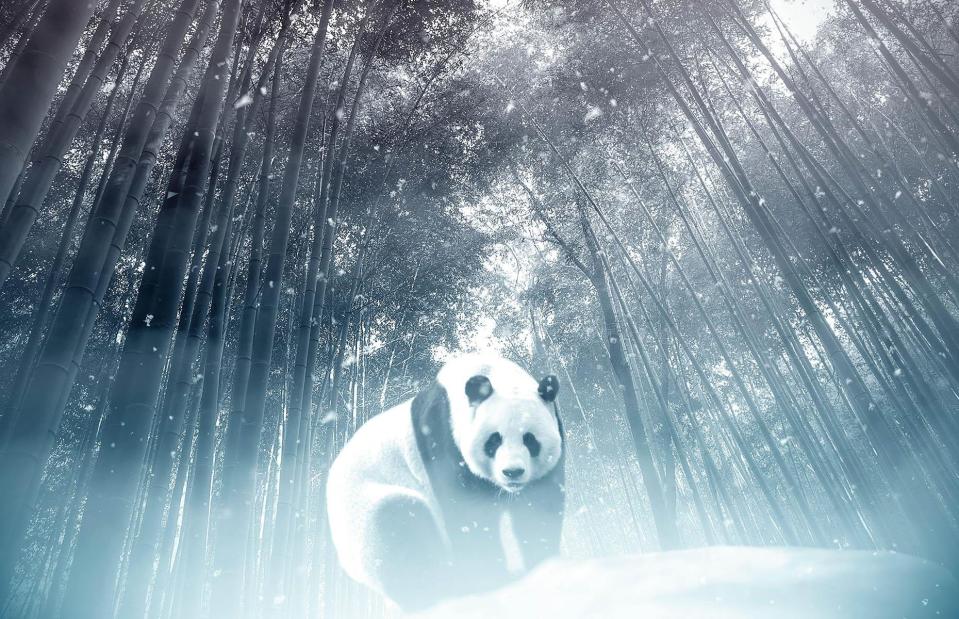
Alexey Panferov/Alamy Stock Photo
Giant pandas are considered a conservation success story. A survey by the Chinese government’s Forestry Administration between 1985-1988 found that there were only 1,114 pandas in the wild and a concerted conservation effort was made to save this beloved icon. Today, those numbers have recovered to 1,864, but risks remain. Increasing levels of poverty in Minshan and Liangshan has led to human encroachment into the pandas’ habitat while elsewhere large-scale redevelopments have fragmented it. Warming temperatures will see the panda’s preferred vegetation slowly shift up slope, taking them out of their protected reserves.
29: Dugong

imageBROKER.com GmbH & Co. KG/Alamy Stock Photo
Dugongs live in the warm coastal waters of the Indian and Pacific oceans and unlike their close cousin, the manatee, they can only live in saltwater. They play a crucial role in their habitat by acting as ‘ecosystem engineers’, maintaining the health of the seagrass they eat by keeping it short, while their behaviour can also provide early warning indicators of environmental change. They are listed as vulnerable on the IUCN Red List, but as humans become more active in their habitat and climate change and warming oceans impact their food source, their numbers are expected to decline even more.
28: African savanna elephant

Dietmar Rauscher/Alamy Stock Photo
African savanna elephants need room to roam and as towns and villages expand, human-elephant conflict is on the rise. Climate change is exacerbating the situation too, with longer and more frequent droughts driving elephants to eat and trample crops, raid food stores and damage village infrastructure including precious water supplies. When a herd wipes out a farmer’s annual crop in a single night, vengeance is often sought with a shotgun. Add in unchecked poaching to meet a seemingly insatiable appetite for ivory, and the future looks tough for this already endangered animal.
27: Humphead wrasse

Imagebroker/Alamy Stock Photo
Growing over six feet long (1.8m) and featuring a prominent bulge on its forehead, the humphead wrasse is certainly a distinctive fish. And that’s the problem. Every tropical fish collector wants one – particularly in Asia – making it one of the most expensive live reef fish in the world. Humphead wrasses are also one of the few coral fish that eat crown-of-thorn starfish, a coral reef predator that can wipe out entire coral gardens. The WWF notes that the illegal and destructive fishing methods used by poachers to catch humphead wrasse can be almost as damaging.
26: Blue whale

Tom Walker/Alamy Stock Photo
The blue whale is the largest animal on the planet, weighing as much as 33 elephants and with a heart the size of a small city car. There are currently 10,000-25,000 adult blue whales roaming the world’s ocean, in search of the four tonnes of krill they need to eat each day. With climate change having a deadly impact on these microscopic, shrimp-like crustaceans, that’s increasingly becoming a problem for blue whales. Add in the threat of getting entangled in fishing nets or hit by ships, and fish farms taking over their vital feeding areas, and their future is challenging to say the least.
25: Red panda

Shivang Mehta Alamy Stock Photo
The northeastern Indian state of Sikkim has a conflicted relationship with its iconic state animal, the unbearably cute red panda. Every winter there's a colourful red panda festival complete with music and parades and all kinds of festivities. But come spring, the state is cutting down the forests the pandas call home. Climate change is having an impact too; temperatures are rising in Sikkim, forcing red pandas to move to higher elevations in unprotected areas to adapt to the changing conditions. Forest fires are becoming more common too – another deadly threat to the dwindling population.
24: Monarch butterfly

Martin Shields/Alamy Stock Photo
Every year the branches of trees in the fir forests of Central Mexico droop under the weight of Monarch butterflies as they rest and reproduce under winter sun. But that could become a thing of the past as millions of acres of milkweed are lost to urban planning and agricultural expansion – robbing the butterflies of the only plant they’ll lay their eggs on and the only thing their babies will eat. New data is already reflecting the consequences. During the 2023-2024 winter season, the monarch butterflies only occupied 2.2 acres, down a concerning 59% from the year before.
23: Whale shark

Martin Strmiska Alamy Stock Photo
The extraordinary size and white-spotted colourations of whale sharks have made them something of a sensation on social media. It seems every snorkeller, diver and influencer wants a snap with these slow moving, plankton-munching gentle giants. This has led to an increase in whale shark tourism, disrupting their feeding patterns, increasing the risk of being injured by boat propellers and generally adding to their already long list of survival threats. These also include poachers, getting caught up in fishing nets and climate change wiping out the tonnes of plankton they need in order to survive each day.
22: African wild dog

WILDLIFE GmbH/Alamy Stock Photo
Also known as the painted dogs because of their distinctive markings, African wild dogs are one of the world’s most endangered canids. Lions are their greatest natural predator, especially when they get into disputes over kills. But it is humans that pose the biggest threat to their survival. As human populations grow in southern Africa, wild dogs are being squeezed out of their habitat. And when they turn to alternative sources of food, angry farmers shoot and poison them for killing their livestock. There are an estimated 6,600 wild dogs left in the wild, but numbers are declining.
21: Atlantic bluefin tuna

Islandstock/Alamy Stock Photo
Next time you grab some takeaway sashimi for lunch, consider the fact that the fish you’re eating is an endangered species. Atlantic bluefin tuna, in particular, is a highly sought-after delicacy for sushi and sashimi in Asia, with a single fish selling for over $1.75 million (£1.4m). Driven by such high prices and the increasing demand for sushi, fishermen use industrial-scale techniques to catch tuna. And fish stocks are plummeting as a result. Pirate fishing in the Mediterranean, the most important bluefin fishery in the world, has pushed stocks there to the point of collapse.
20: Black-footed ferret
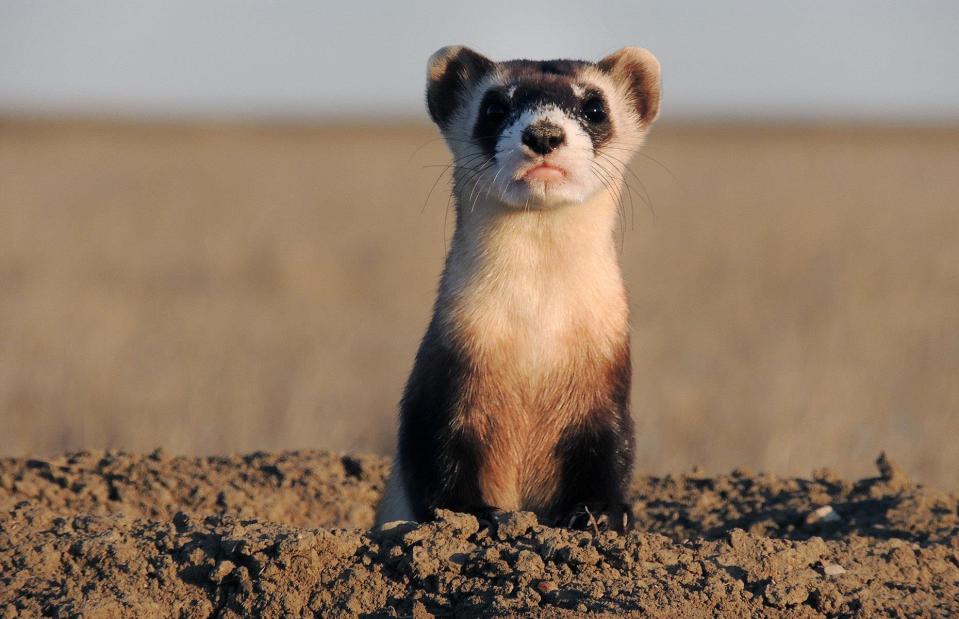
PBH Images/Alamy Stock Photo
The black-footed ferret is one of North America’s most endangered mammals and at one time was thought to have been extinct. But then a business (the group name for ferrets) of the critters was found in Wyoming in 1981 and these cute, inquisitive creatures have been brought back, quite literally, from the brink. Today over 300 black-footed ferrets live in the wild, although habitat loss and disease remain a threat. Biologists say they won’t rest easy until that number reaches 3,000 adult ferrets.
19: Galapagos penguin

Christian Kober 1/Alamy Stock Photo
Among the smallest penguins on the planet, the Galapagos penguin is the only penguin species found north of the equator. There are fewer than 2,000 in the wild and they are threatened by pollution, fishing nets and introduced species like cats and dogs, which carry disease. Climate change is a problem too. Galapagos penguins are extremely susceptible to disruptions in food availability caused by strong El Nino events. The 1982-83 and 1997-98 El Nino events saw their population crash by up to 77%.
18: Mountain gorillas

Nature Picture Library Alamy Stock Photo
When Sir David Attenborough visited the lush volcanic mountains straddling the Democratic Republic of Congo, Rwanda and Uganda in 1979 there were only 600 mountain gorillas left and they were listed as critically endangered. Thanks to the International Gorilla Conservation Programme, that number has increased to over 1,000, split between the Virunga region of those three countries and the Bwindi Impenetrable National Park in Uganda. Sadly war, hunting, habitat destruction and disease could easily undo all that good work.
17: Golden mantella frog

Evan Bowen-Jones/Alamy Stock Photo
The brightly-coloured and extremely tiny golden mantella frog lives in the rainforests of central-east Madagascar. And while it is only rated as endangered on the IUCN Red List, its numbers are plummeting at an alarming rate. Golden Mantella females lay their eggs on the forest floor, counting on the emerging tadpoles to be swept into swamps, temporary ponds and flooded forests, making the species particularly susceptible to agriculture and logging encroaching on its habitat. Experts, like the conservationist pictured here, are also concerned about over-collection by the illegal wildlife trade due to the golden mantella’s popularity among frog enthusiasts.
16: Eastern lowland gorilla

imageBROKER.com GmbH & Co. KG/Alamy Stock Photo
With its stocky body, large hands and short muzzle, the eastern lowland gorilla looks like a bit of a bruiser. But this gentle giant, the largest of the gorilla subspecies, grazes mainly on fruit and other herbaceous materials, in an area in the Democratic Republic of Congo (DRC) that is ravaged by civil unrest. Its habitat is now 13% of its historical size, its numbers have plummeted by 50% since the mid-1990s and the general lawlessness in eastern DRC has seen poaching reaching epidemic levels, even in Kahuzi-Biega National Park, home to the largest population of protected eastern lowland gorillas.
15: Hawksbill turtle
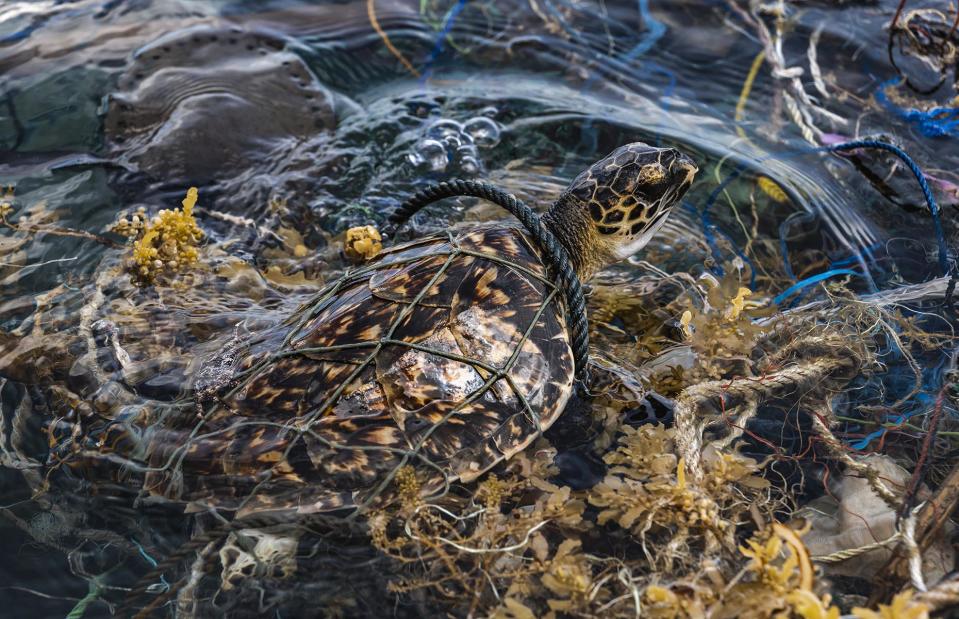
Ulet Ifansasti/Getty Images
With an estimated 20,000-23,000 nesting Hawksbill turtles roaming the oceans of the world, it may be difficult to comprehend them as a critically endangered species. But when you consider the rate of their decline and the continuing degradation of their habitat, their plight is particularly bleak. In the last 30 years the number of hawksbill turtles has plummeted by at least 80% thanks to overfishing, nesting habitat degradation, coral reef damage and illegal poaching. Add in plastic pollution, climate change and rising sea levels and their plight looks even worse.
14: Black rhinoceros

Bill Gozansky/Alamy Stock Photo
In some ways, the black rhino can be seen as something of a conservation success story. European hunting safaris in Africa during the 20th century saw the population of black rhinos drop dramatically, while large-scale poaching between 1960 and 1995 took the species to the edge of extinction, wiping out 98% of the remaining population. Since then, conservation efforts have seen numbers roughly double from 2,500 to 5,630 individual animals. But the bizarre notion that their horn has some kind of aphrodisiacal qualities means they are still poached – and listed as critically endangered by the IUCN.
13: Bornean orangutan

Russell Watkins/Alamy Stock Photo
Despite successful conservation efforts and a crackdown on the illegal wildlife trade slowing the decline of wild orangutans in Borneo, the fact remains that the greatest threat to one of our closest relatives is the catastrophic loss of habitat. An estimated 300 million trees have been cut down in Borneo since 1994, with much of the forests the orangutans call home exploited for timber production or in the process of being converted to agriculture. With the rainforest gone, the risk of fire also increases. In 1997-98, forest fires in Kalimantan, the Indonesian half of Borneo, killed up to 8,000 orangutans.
12: Waved albatross

Steve Bloom Images/Alamy Stock Photo
While all species of albatross have been struggling with the impact of climate change and the dangers of becoming ‘bycatch’ in the nets of the fishing fleets that roam the world’s oceans, the waved albatross is particularly susceptible. They have an extremely small breeding range, essentially the island of Espanola in the Galapagos Islands, and scientists have noted that climate events like the El Nino Southern Oscillation have a profound impact on the mortality of adults. Bizarrely, waved albatrosses have also been observed rolling their eggs onto rocks and smashing them – unexplained behaviour that has a huge impact on their plummeting numbers.
11: Cross River gorilla

Arend de Haas/Alamy Stock Photo
Cross River gorillas are a critically endangered subspecies of the western lowland gorilla that can only be found in a small section of lowland montane forests on the Cameroon and Nigeria border. It was thought they’d been wiped out by civil war in Nigeria in the 1960s but in the 80s a small group were found on the banks of the Cross River. Today less than 300 remain, scattered across 11 family groups. Because the area they live in is unprotected, habitat loss is a real threat, as is poaching for bushmeat. There’s also the risk of inbreeding due to the extremely small population size.
10: African forest elephant

Danita Delimont/Alamy Stock Photo
The plight of elephants across Africa is dire thanks to climate change, habitat loss and increasing conflict between farmers and these beasts. But for the forest elephants of West and Central Africa, those problems are even more acute, with their habitat shrinking from three million square miles (7.7m sqkm) in 1979 to just over one million square miles (2.5m sqkm) in 2007. As these notoriously shy creatures retreat deeper into the few pockets of forest that remain, their exact numbers are a mystery. But with their population declining by 86% over the last 31 years, they are considered critically endangered.
9: Tapanuli orangutan

BIOSPHOTO Alamy Stock Photo
The Tapanuli was only listed as a distinct species of orangutan in 2017 but it already holds the dubious honour of being the most endangered great ape species in the world. There are less than 800 of these tree-dwelling primates left in the wild, tucked away in the Batang Toru forest in northern Sumatra, an area that has seen 40% of its forests lost between 1985 and 2007 alone. Even worse, a proposed Chinese-funded Batang Toru hydropower dam threatens to submerge a large chunk of the orangutan’s habitat.
8: Yangtze finless porpoise

China Photos/Getty Images
Known for its mischievous smile and impressive intelligence, the Yangtze finless porpoise used to share China’s mightiest waterway with the Yangtze river dolphin, the only place in the world where the two species coexisted. But after the Yangtze river dolphin was declared extinct in 2006, the Yangtze finless porpoise has had the river to itself. It’s an increasingly challenging environment, however, thanks to overfishing, water pollution and the impact of the Gezhouba and Three Gorges dams. But after China upgraded them to ‘first level protected species’ in 2021, their numbers have stabilised to between 1,000-1,800 individuals in the wild.
7: Sunda Island Tiger

Robbie Taylor Alamy Stock Photo
The Sunda Island, or the Sumatran, is the smallest tiger subspecies in the world and also the rarest. They can only be found on the island of Sumatra, in pockets of jungle and forest that are under constant threat from deforestation and expansion of human settlements, and their dark thick coats, with black stripes that are closer together, are highly sought after by illegal wildlife poachers. Some estimates suggest that there are less than 250 left in the wild, raising the fear that the Sunda Island tiger could become the first big cat extinction of the 21st century.
6: Giant salamander

Imaginechina Limited/Alamy Stock Photo
Giant salamanders are the biggest amphibians in the world and also most under threat. Growing to nearly six feet (1.82m) long and weighing roughly 140 pounds (63.5kg), they are indigenous to the hilly regions of central and southern China where they are also considered a delicacy. A relatively tiny four-pound (1.8kg) salamander can fetch up to £1,180 ($1,500) to be used in soups and stews, leaving the wild population critically endangered and decreasing rapidly. Their habitat is under threat too, with streams increasingly polluted by industrial waste.
5: Kakapo
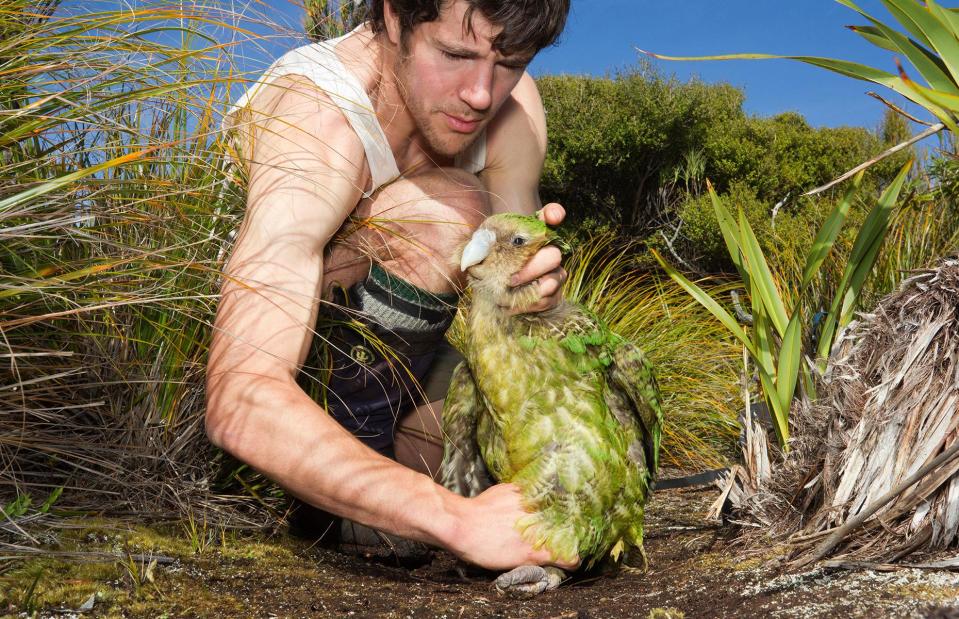
Minden Pictures/Alamy Stock Photo
The kakapo is a giant flightless parrot from New Zealand that looks like an owl, has the posture of a penguin and walks like a duck. They are also quite tame and easy to catch, making them easy pickings for species introduced by Maori and European settlers like rats, weasels, cats and settlers themselves. By 1977 extinction beckoned. Only a handful of kakapo existed and they were all male. But then, in the same year, a population of about 200 was discovered on Stewart Island off the southern tip of South Island. Today only about 100 kakapo remain.
4: Amur leopard

Zoonar GmbH Alamy Stock Photo
Listed as critically endangered since 1996, the Amur leopard is regarded as the rarest big cat in the world, with a wild population of less than 120 individuals isolated in a small region in the far east of Russia and north-eastern China. Their habitat is constantly under threat from unsustainable logging, forest fires and farming and at one stage in the 20th century the population fell as low as 20-30 animals. The creation of the Land of the Leopard National Park in Russia in 2012 and increased anti-poaching initiatives have helped to bring the Amur leopard back from the brink of extinction.
3: Vaquita

GUILLERMO ARIAS/AFP via Getty Images
The vaquita is the world's smallest porpoise and the rarest marine mammal on the planet. They live in the shallow waters of Mexico's Gulf of California where it is believed only 11 individuals remain. It is a designated protected marine area, but illegal fishing has seen the vaquita caught and drowned in gillnets and their numbers plummet. This painting hangs in a boat belonging to the Sea Shepherd organisation, which is working with the Mexican navy to prevent the vaquita from being lost forever.
2: Javan rhinoceros

TIMUR MATAHARI/AFP via Getty Images
The Javan rhinoceros is the rarest living rhinoceros and one of the most endangered mammals on the planet. They once roamed the forests and marshes of Indonesia and Sout-east Asia but hunting and habitat loss caused a staggering decline in their numbers. Today only 68-74 individuals survive, tucked away on a tiny peninsula in the far west of Java in Ujung Kulon National Park. Despite being the face of conservation education in Indonesia (pictured), their last pocket of habitat is being invaded by Arenga palms, leaving them with less food to eat and less habitat to roam.
1: Saola

Silviculture via Wikimedia/ CC BY-SA 3.0
The fact that the saola is also known as the Asian unicorn tells you how rare this creature is and why it tops our list. They can only be found in the Annamite Mountains of Vietnam and Laos and were only discovered in 1992 – the first large mammal new to science in 50 years. No one is sure how many actually exist. They have only been categorically documented in the wild four times and are hence considered critically endangered. Despite their antelope-like appearance, they are actually more closely related to cattle.


